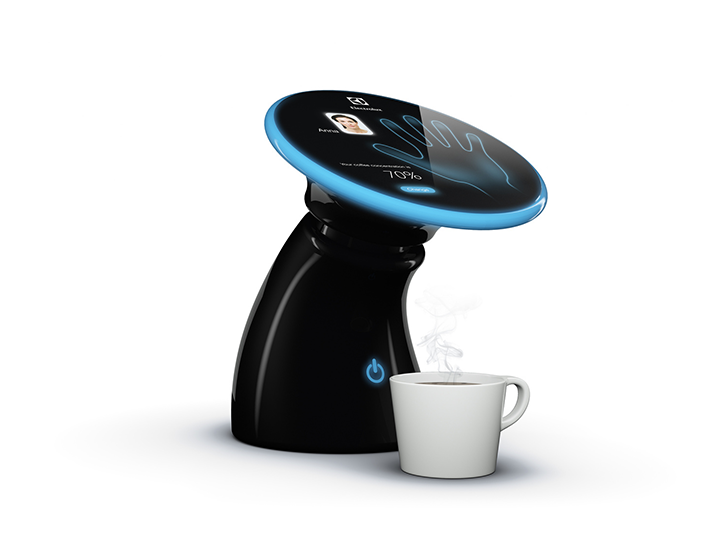A modern family confronted with one of the original Lux vacuum cleaners might struggle to guess what it is. Heavy, bucket-shaped and difficult to move around the home, it is light years from its modern descendants, whose appealing exterior and user-friendly features are derived from extensive consumer research. How that development occurred is a story not only of technical innovation, but also of cutting-edge design drawn from collaborations with some of the world’s leading forces in the field.
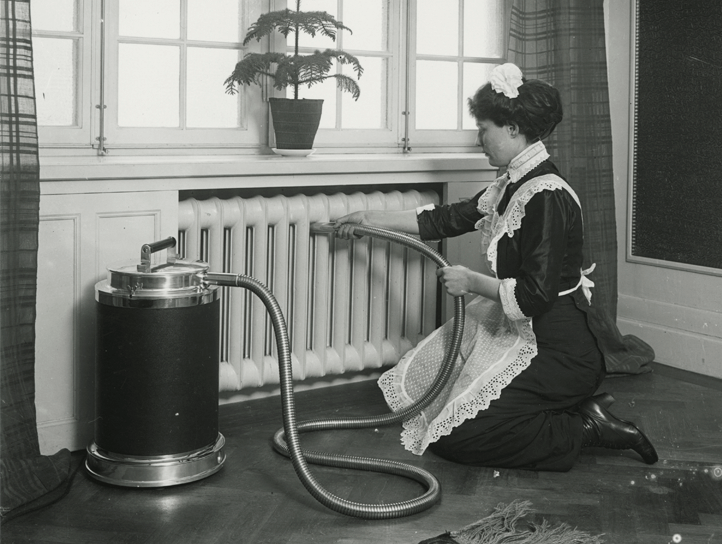
A cleaning lady with the vacuum cleaner Lux I in the early 1900's
While an in-house design department today is a given part of any self-respecting consumer products company, Electrolux early products were shaped to a large degree by founder Axel Wenner-Gren and technical director Sven Carlstedt. Wenner-Gren and Carlstedt were an ambitious duo who complemented each other excellently. Salesmen would come to their sales meeting with criticism and comments from the customers. And with each new model, the team would make improvements to the product. Model 111 from 1915 had a handle. Then straps were added so it could now be carried on your back.
The Lux Model V from 1921 was the first really big seller. Horizontal and lighter, it could be pulled smoothly along on the floor runners, which are said to have been conceived and penned into a product sketch by Wenner-Gren himself based on a consumer complaint. Its popularity among consumers drove Electrolux early international expansion.
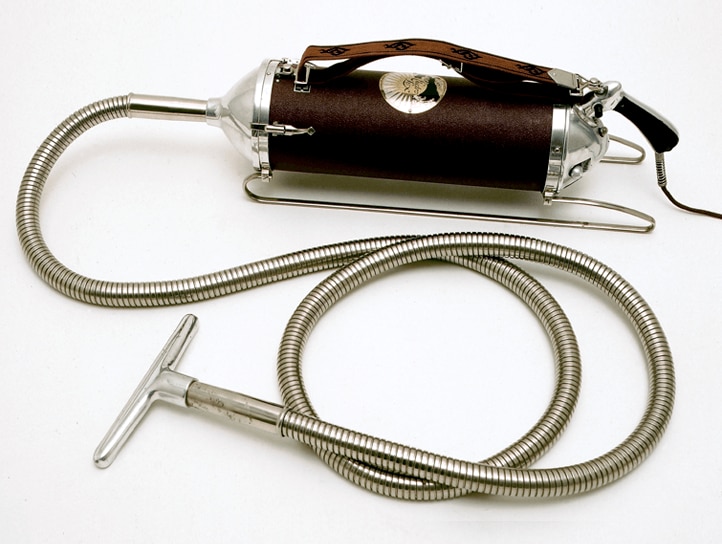
Lux Model V - the first highly successful vacuum cleaner from Electrolux
Electrolux first serious venture into industrial design came in the 1930s and 40s when Wenner-Gren signed up American designers Lurelle Guild and Raymond Loewy to create refrigerators, vacuum cleaners and floor polishers. Loewy, sometimes dubbed “the man who shaped America” and “the father of streamlining”, was taking the U.S. with storm through the elegance of his sleek products: vehicles, packaging, buildings and appliances. Among his most successful products was the Super Six Coldspot refrigerator for Sears Roebuck.
Wenner-Gren wanted in and he wanted to hire the best designers available for Electrolux. Loewy created products including the L300 refrigerator, while Lurelle Guild created the Model XXX, a streamlined vacuum cleaner in glorious art-deco style. A combination of beauty and functionality, it was launched in 1937 and became a real evergreen in the USA, on the market until 1954!
Guild had put the Swedish company on the global design map and Wenner-Gren was generous in his praise: “You have given Electrolux products attractive design and perfect form.”
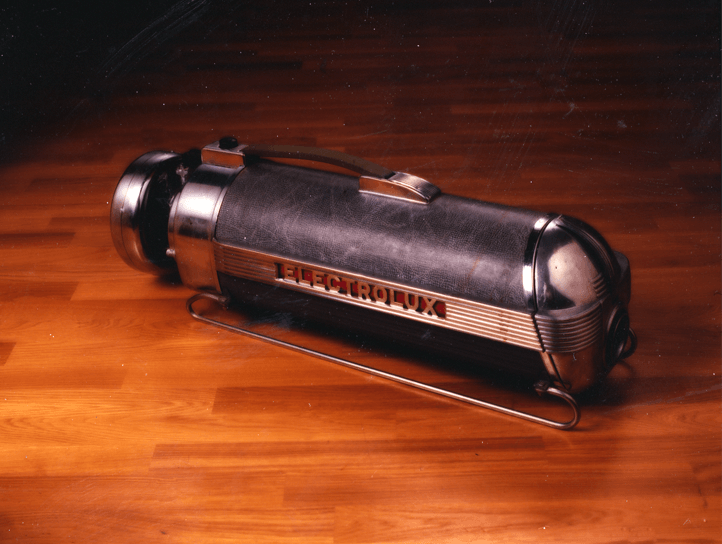
Model XXX was designed for Electrolux in the USA by Lurelle Guild 1937
With the AEG brand a core part of the Electrolux Group since the 1994 acquisition of AEG Hausgeräte, the company is also proud to consider AEG’s early collaboration with Peter Behrens an important part of its history. AEG hired Behrens as an artistic consultant already in 1907 and the work he did in designing the Germany company’s early appliances often has him credited as the world’s first industrial designer.
Vibrant design talents impact Electrolux in the post-war period
In the 1940s, Electrolux started working with talent closer to home, and a new generation of idiosyncratic Swedish designers began to make their presence felt. Inspired by streamlining, they came nevertheless with their own vision.
Sixten Sason had trained as a pilot before a crash thwarted his ambitions. He went on to create ground-breaking designs for planes and cars at Saab. At Electrolux he was best known for his eye-catching distinctive vacuum cleaners and floor polisher. Highly versatile, he also created a chainsaw for Husqvarna and a camera for Hasselblad. Ralph Lysell was another Swedish design star who, while known best around the world for his work on the iconic Ericofon, or cobra telephone, also contributed to the Electrolux product offering.
During the 1950s, Electrolux frequently consulted US designer Carl Otto, who shaped Electrolux first chest freezer, the City Box from 1956, among other products.
Design moves in-house
In 1963, Electrolux set up of its own design department under Hugo Lindström. The Luxomatic vacuum cleaner in 1964 was one of the first fruits of this new initiative. It included a cord-winder, self-closing paper bags and dust indicator to show when it was full. There was also an enthusiasm about colours. The “New Generation” line, introduced in 1975 included the options of poppy red and copper as well as the standard white.
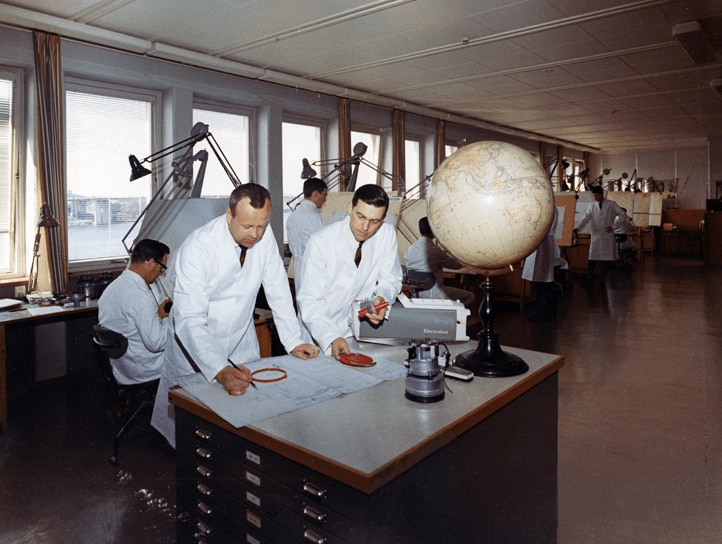
The drawing office's department for vacuum cleaners at Electrolux' central laboratory
Zanussi Acquisition
This love of colour continued with the acquisition of the Italian company, Zanussi, in 1985. Their Head of Design, Roberto Pezzetta, now became an important figure at Electrolux. Famed for using humour, charm and colour in his designs, white, clinical, box-shaped devices were nothing for Pezzetta.
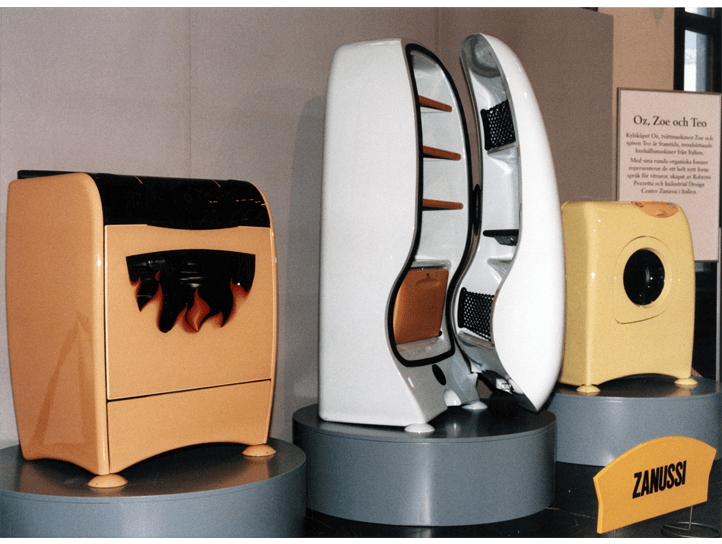
Roberto Pezzetta's design concept with from left to right; Teo, Oz and Zoe
Appliances should be seductive and create an emotional response, as exemplified in creations such as the ZOE washing machine, OZ fridge and TEO cooker.
Design contestants from over 100 countries
Electrolux continued to find innovative ways to keep its finger on the pulse of the modern consumer. In 2003 a prestigious, annual, global industrial design competition was launched: Design Lab. Undergraduate and graduate students from all over the world were encouraged to submit designs for innovative ideas for household appliances of the future. Each year the contest had a different theme and was based in a different city.
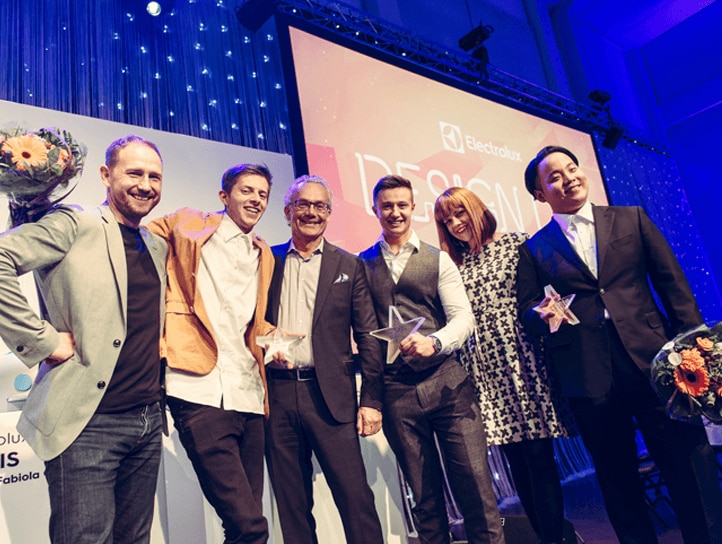
Winners on stage at the 2015 Design Lab Awards
From the thousands of entries, a shortlist of finalists were chosen to present their idea to a jury of designers and experts. Along with the considerable prestige of winning, the winner was awarded a six-month internship at Electrolux.
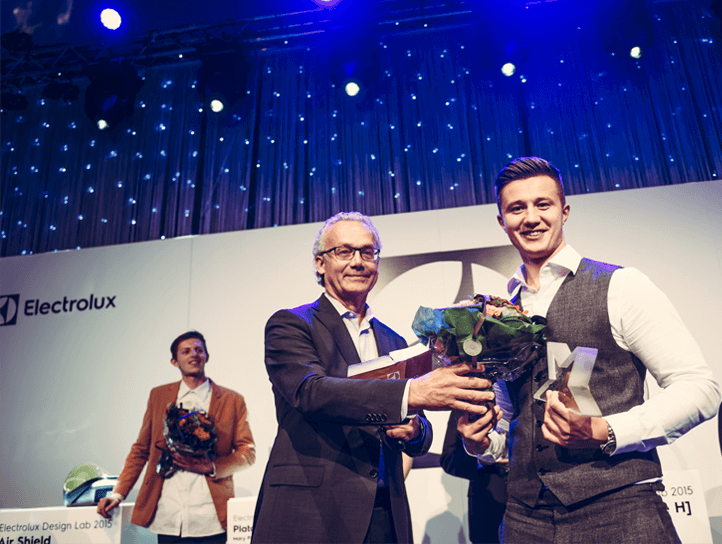
Design Lab winner Jordan Lee Martin receiving the award from Lars Erikson, former Head of Group Design
The competition served as an effective means of “crowdsourcing” for new ideas and trends. The ways to find fresh talent may have altered, however the commitment to design excellence and technical innovation continues.
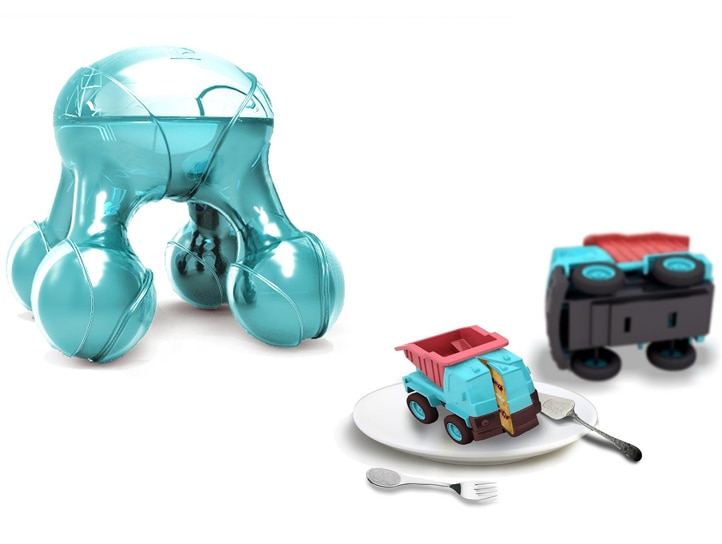
The Atomium concept was a printer that uses molecular ingredients to construct food layer by layer. The concept was designed to help children prepare their own food in a fun way
Making that human connection
Today, Electrolux global design organization is led by Pernilla Johansson and comprises 200 team members at 7 design centers around the world: Stockholm, Sydney, Singapore, Curitiba, Charlotte, Shanghai, and Vallenoncello.
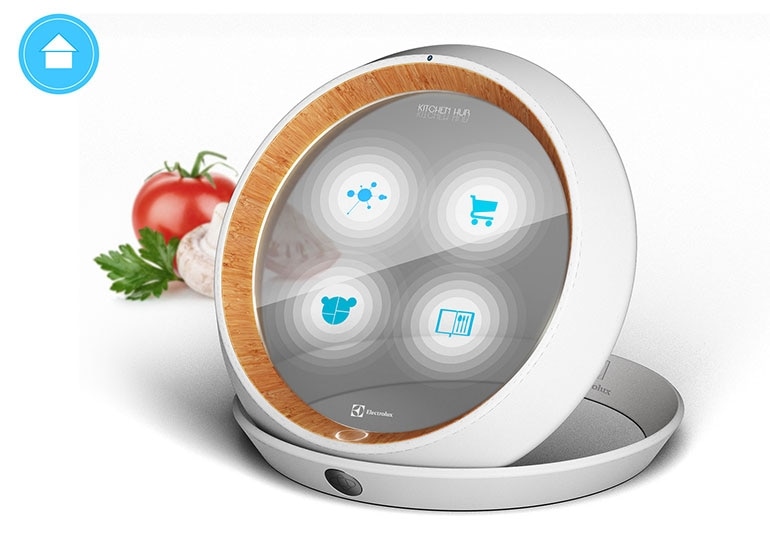
The Kitchen Hub concept was a household food stock controller helping families know what ingredients you have at home and when they expire
Its work is based on the design philosophy “Human Touch”, which means designing for all our senses – from the overall quality of materials, and fit, feel and finish to thoughtfulness of use and context through in-depth usability testing. It’s the difference between products that are only aesthetically pleasing and products that provide meaningful holistic experiences.
